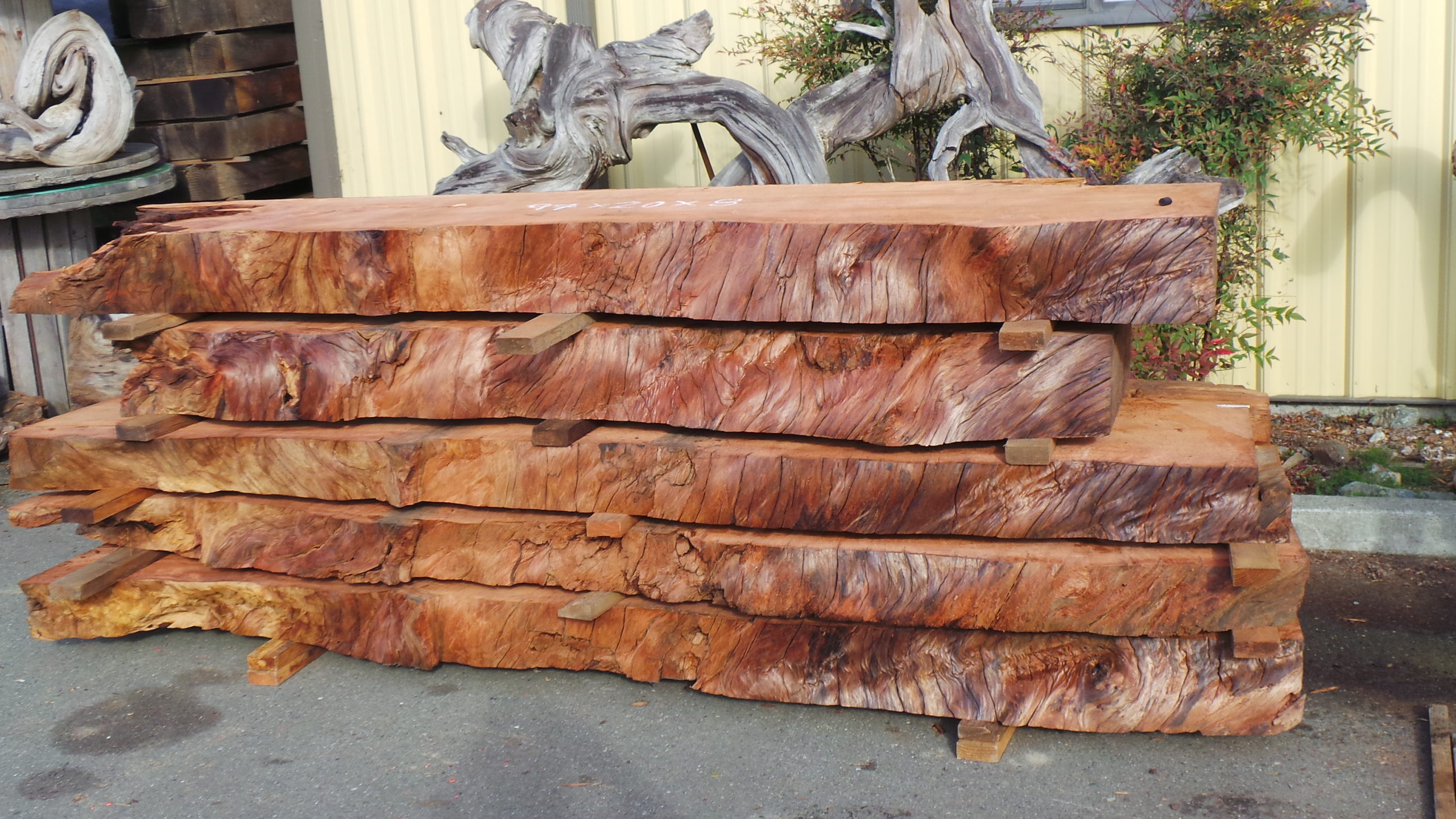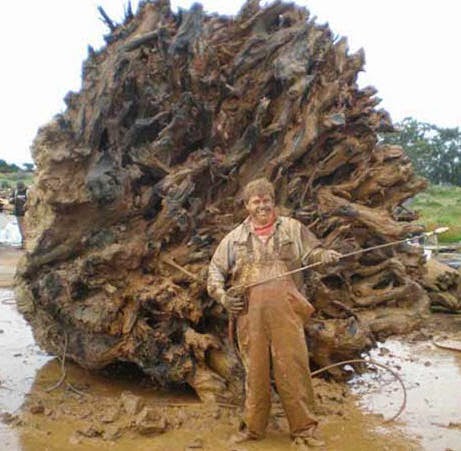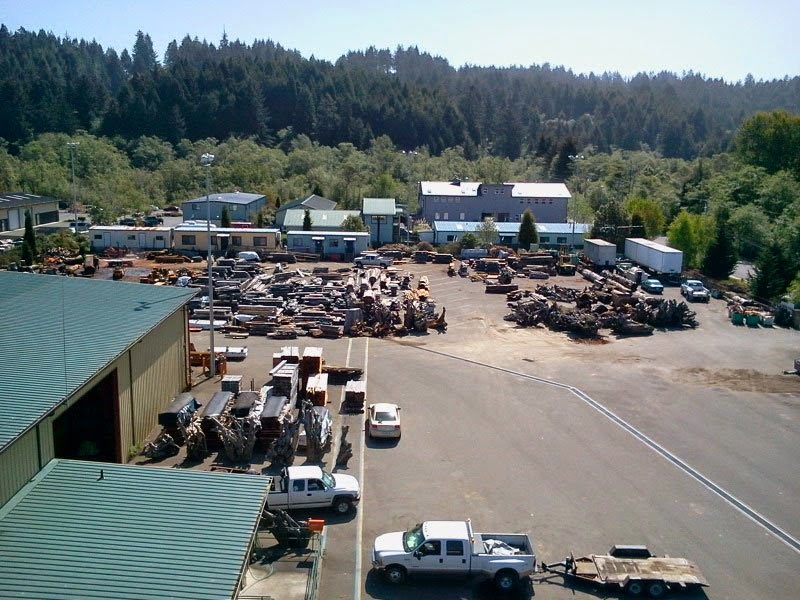
Salvaged Old Growth California Redwood
People often ask us where we get our wood. I’m going to try and answer that while not giving away any secrets. Some of this information may have already been covered in some of our earlier blog posts on logging history in the past few months.
The first thing you need to know is that there is more than one part to a tree. First, you have the trunks, which when fallen and bucked (de-limbed and sectioned), become logs. Then you have the remainder of the root that is in the ground, called a stump. Each part, the log, and the stump will yield different types of products.
History of Redwood Logging
If you read up on the subject, as I have over the years, you will find that this whole county was logged between 1850 and the 1960s. However, Redwood trees (Sequoia sempervirens) were not logged until 1855. By that time they had figured out how to deal with such a massive tree. The logger’s method at the time was called clear-cutting. It is a method in which all of the trees in an area are cut down to a uniform size.
Old Growth Redwood
Clear-cutting old-growth redwoods took our redwood forests from just over 2 Million acres down to the remaining 133,000 that remain today. At some point, logging companies thought ahead and started replanting redwoods so they would be able to harvest them again in the years to come. This wood is what we now call second-growth redwood. Old-growth has a much different character than second growth, caused by the density of the growth rings giving the wood a darker or almost brown look. Second growth appears pinker in color and is generally what you will find at the lumber yard. The growth rings in second-growth are usually only 60 to 100 for the whole tree, not 2000 – 3000 or more you would find in an old-growth tree.
Second Growth Redwood
As lumber companies today harvest the trees that were replanted over the last 100 years, they find many old logs that were left behind during the earlier clear cuts. If the log had any defects in it, it was left in the woods because it had no commercial value at the time. Believe it or not, the ‘defects’ at the time would have been curls in the grain or burl formations of any kind. This wood was considered not structurally sound and could not be used to make lumber. As we all know, lumber is strong because of the way it is cut with the grain, running the length of the board to make it sturdy. Curly character or burl in the grain would cause lumber to snap under pressure.
Salvaging Redwood
Although these leftover logs are not good for lumber, other markets have found a great use for them. For example, there are many wood-burning power plants up and down the coast where they will chip and grind a whole log, just to make sawdust, to produce fuel for the plant. We purchase these logs and cut them into slabs for tables and other products using a specialized mill. We also use the top and bottom cuts, which are narrower, to make Fireplace Mantels, which are one of our most popular products. This old-growth redwood typically has the grain running the length of the piece as well as lots of character.
Reclaiming Redwood Stumps
For every tree that was cut, a stump was left in its place. We are talking millions if not billions of stumps here. Many of these stumps are in places not easily accessible and still in the forest of second-growth trees. Many of these stumps are old and rotten and can have numerous new redwood trees sprouting around the base. Some of the trees cut in the last 60 years have stumps that are still somewhat sound and solid.
Some of these areas where stumps are located are now in the hands of private landowners. These new landowners usually want to build on their land, and with this new construction comes roads and driveways. To make these access ways, they need to remove stumps. Companies are hired with excavators and big trucks to pull out just enough of the stumps to build the roads to their homes. People see the value in these stumps and come to us to sell them. We sometimes have Low Boys in our yard with only one big stump in it. But usually, there are at least 3-5.
Where the logs can just be power-washed and milled, these stumps require a bit more preparation. You can’t just pick up a saw and start cutting. It takes many hours of power-washing to remove all the dirt, rocks, and other debris from between the roots before they can be milled. It is definitely worth the time as these roots contain some of the best wood that can be found. These root slabs also called burl slabs, come in all different sizes. They make great dining tables, coffee tables, fireplace mantels, and anything else you can imagine.
Environmentally Sourced Redwood
Purchasing wood in this way provides us with reliable sources for reclaimed old-growth redwood. We do not buy redwood slabs, blocks, or any other forms of redwood from people off the street. Having been in this business for more than 40 years now, we know who the legitimate sources are.
Over the last few months, there has been national and worldwide coverage of the redwood poaching happening in our local area. We have participated in countless interviews and answered questions for news articles related to the subject. It is our firm belief that nothing good comes from harming such majestic trees. We live here surrounded by these beautiful giant trees. In fact, I see them every single day, as they grow in my yard.
If you are ever in the area, please be sure to stop in and see our facility. I suggest you give us a call beforehand. That way we can make sure that Landon will be around to talk with you and show you around.



